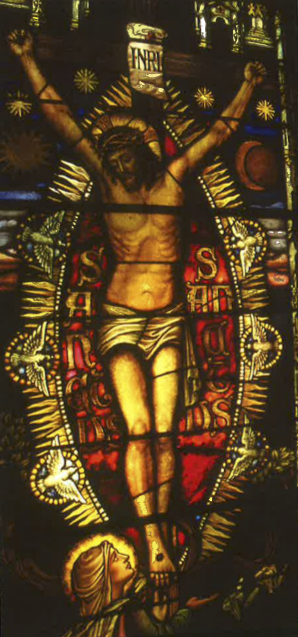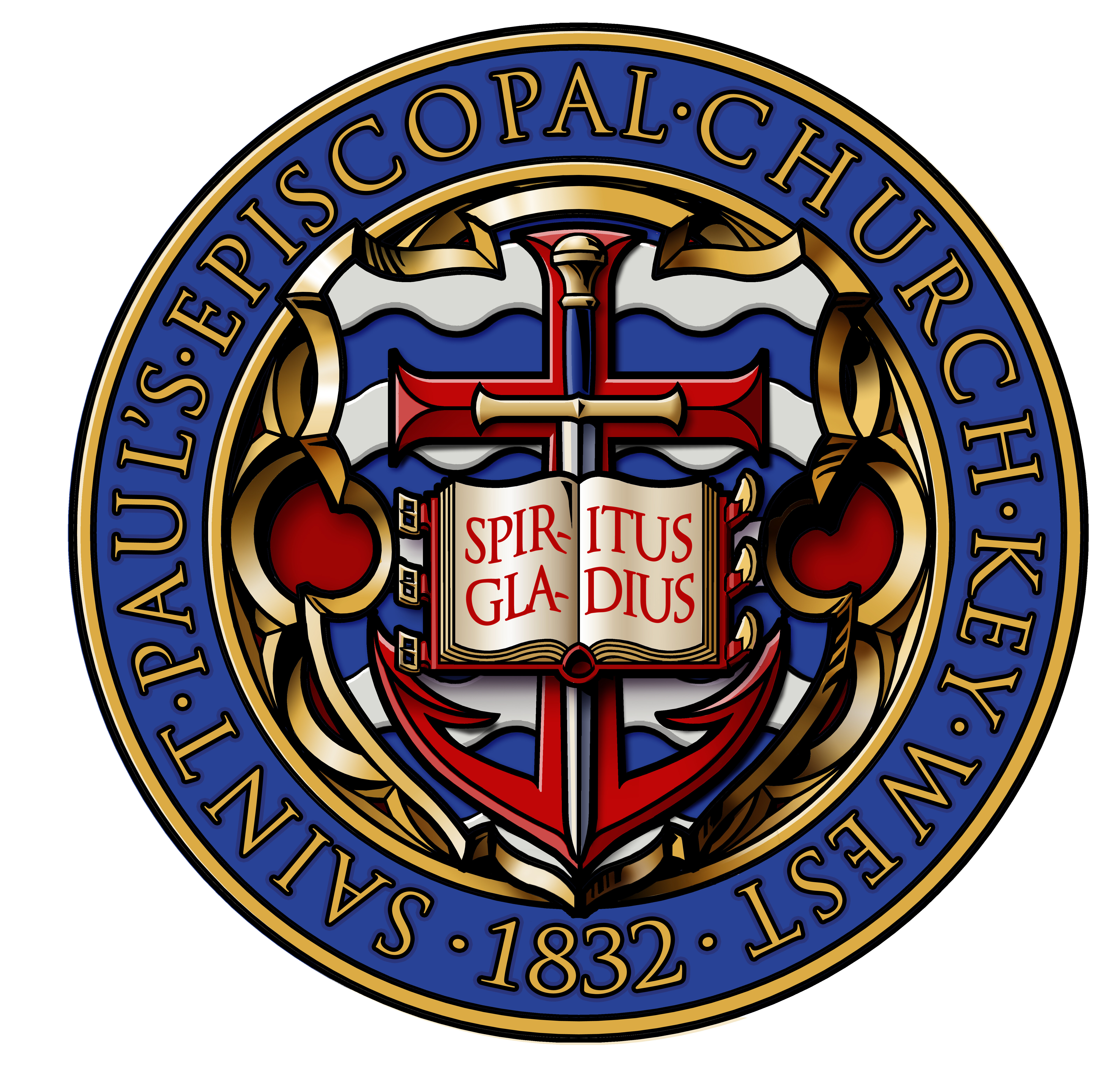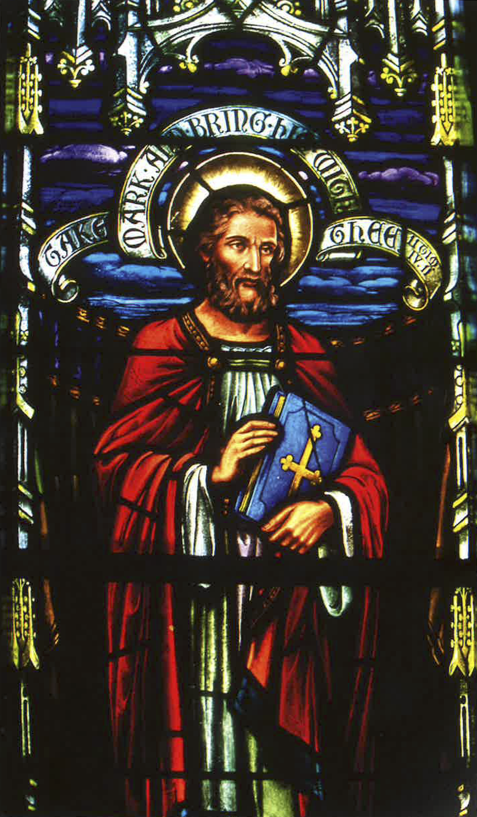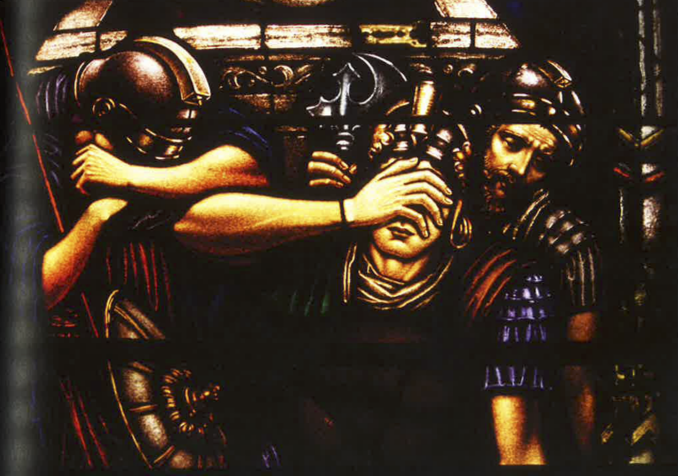
Crucifixion (Center Panel Detail)
Phipps, Ball & Burnham - 1920
In Loving Memory of Mary Elizabeth Lowe Born 1837 Died 1919 and
John Lowe Jr. Born 1833 Died 1917
DESCRIPTION AND SYMBOLISM: The center panel of the Crucifixion, the spiritual and inspiring
focal point of the church, depicts the crucifixion of Jesus. It is intricately detailed and filled with symbolism. Near the top of the cross appears a sign bearing the inscription, INRI, letters which stand for the phrase in Latin which translates to: "Jesus of Nazareth, King of the Jews." Placed on the cross in mockery by Pilate, it is regarded as a symbol of faith. Surrounding the entire figure of our Savior is an irradiance of light, an aureole, interspersed with six doves, representing the Holy Spirit. The oblong aureole surrounding the crucified Jesus is said to represent His ascension into heaven and the Glory of God. Against a ruby background, the word, "Sanctus", Latin for holy, is on either side of the body of Jesus. In the background are the sun, the moon and four stars depicting the passage of time during the Crucifixion; the moon and the stars tell of the ninth hour, the time of Jesus' death. The jar on the ground symbolizes anointment, the sacred rite of consecration; the lily foretells the Resurrection.
MEMORIAL: John Lowe, Jr., son of John Lowe, Sr. and Bianca Kemp Lowe, was born on March 11, 1833 on Green Turtle Cay, Bahamas. He married Mary Elizabeth on December 15, 1856 in a ceremony performed by The Reverend Osgood Herrick, rector of St. Paul's. They lived in a lovely, spacious home at 620 Southard Street with their children Edward, Eugene, George, Stephen, Charles and Emma.
John Jr., largely self-educated, began work at the age of 12 in his brother-in-law's firm, Browne and Curry. He became a pioneer in the maritime industry contributing to Key West's status in the mid-1880s as the richest city in Florida, attributable to the lucrative wrecking, or salvaging, industry. Не was in the mercantile business and in the sponge industry, owning 15 to 20 schooners engaged in both sponging and wrecking. His wharf became the largest sponge market in the world; his shipping enterprise supplied Key West with building materials, live beef cattle, vegetables, tropical fruit from South and Central America, and many other necessities.
John Lowe, Jr. faithfully served St. Paul's in many ways. He was a vestryman during the building of the fourth and present church, but died before its completion.
Source: The Golden Cockerel: The Art, Symbolism & History of the Stained Glass Windows, St. Paul's Episcopal Church, Key West, Florida by Winifred Shine Fryzel.
To continue the tour, look on either side of the high altar, and notice the more modern style of the dedications there by Powell Brothers & Sons, including Window #119: Zacchaeus Climbing the Sycamore Tree.
Please consider making a donation to St. Paul's so that we may continue our work, including the stewardship of our beautiful grounds, buildings, and windows.




Login To Leave Comment